Born in
1882 in Nyack, near New York City, Edward Hopper is the greatest painter of
modern American life yet to emerge. He studied painting in New York with Robert
Henri, founder of the Ashcan school. On leaving college, he became a commercial
artist, only giving up this career at the age of 42 to become a full-time
artist. His interest in the effects of light was inspired by the
Impressionists, whose work Ix saw in Paris.
Hopper
found his very distinctive style in the 1920s and hardly changed it at all from
then on. Although he lived through the heyday of abstraction, Hopper remained
committed to the tradition of representational painting. Despite his late
start, America was quick to heap honours upon him. But he remained a very
private man, leading a life dedicated to painting with his wife, a fellow artist.
Hopper died in 1967, aged 84.
A tall,
laconic American, Edward Hopper liked to think of himself as a down-to-earth,
self-made man. He cherished his personal privacy, preferring silence to idle
chatter and artistic pretension.
Edward
Hopper grew up in middle-class small-town America. He was born on 22 July 1882
in Nyack, on the Hudson River just above New York City, the son of a
shopkeeper. He later described his father as 'an incipient intellectual who
never quite made it'. Edward was a solitary, bookish boy, who stood apart from
other children because of his abnormal height he suddenly grew to six feet at
the age of 12. The Hoppers' home overlooked the Hudson, and Eddie, as he was
then called, developed an early enthusiasm for boats, building his own cat-boat
at 15 with wood and tools supplied by his father.
Encouraged
by his mother, Hopper soon began to demonstrate a precocious talent for drawing
and, at the age of 17, he entered the Correspondence School of Illustrating in
New York. The following year he transferred to the New York School of Art,
studying first illustration and then painting. He found himself among an
exceptionally gifted generation of students, including famous names of the
future such as George Bellows and Rockwell Kent. His most t inspiring teacher
was Robert Henri, who fostered Y. in him a taste for subjects from everyday
urban life in the USA, as well as a respect for the great realist 3 masters of
the past; Velazquez, Goya, Daumier, Manet and Degas.
In
1906-7, with the money he saved from a brief, unsatisfying stint of work as an
illustrator with an advertising agency, and some help from his parents, Hopper
was able to realize his ambition of visiting the art capital of the world,
Paris. He stayed there for a few months and had an utterly un-bohemian time. His
parents made arrangements through the Baptist Church for him to stay with a
suitable bourgeois family, and he seems to have taken no interest in
avant-garde artists or their work. Instead, he came under the spell of
Impressionism, and developed an interest in capturing effects of light that was
to stay with him for his whole career as a painter. He was in Paris again in
1909 and 1910, after which he never again returned to Europe.
1882 born in Nyack, on the Hudson
River
1900-6 attends New York School
of Art, studying under Henri
1906-10 makes painting trips to
Paris
1913 sells painting in Armory
Show
1924 marries Jo Verstille Nivison;
abandons commercial work
1932 shows work in Whitney
Museum exhibition
1934 builds studio-house at Cape
Cod
1950/64 retrospective
exhibitions
1967 dies at studio in New
York
Back in
America, Hopper began to exhibit fairly regularly in New York, not at the
conservative National Academy of Design, which rejected his work, but at the
small anti-academic exhibitions organized by Robert Henri and other former
pupils at the MacDowell Club. But no critics or collectors took any serious
interest in him, and actually making a living from painting seemed out of the
question. Indeed, it is a measure of the doggedness that was part of Hopper's
character that he continued with art at all, only becoming a full-time painter
in 1924, at the age of 42.
Until
that date, Hopper reluctantly supported himself by commercial design and fairly
routine illustrative jobs, working three days a week for advertising agencies
and strictly non-artistic journals such as The Farmer's Wife, The Country
Gentleman and System, the Magazine of Business. On occasion, he would eke out
his income by giving art lessons to children back home in Nyack, which he
disliked even more. He managed to sell a painting for $250 at the famous Armory
Show in 1913, and in 1918 won a prize of S300 from the US Shipping Board for a
propaganda poster entitled smash the Hun, but consistent success eluded him.
In
1913, Hopper took the studio at Washington Square North in New York City that
he occupied for the rest of his life, renting extra working and living space as
his finances allowed, yet never altering the bare, Spartan look of the place.
The habit of thrift instilled in him by his upbringing and deepened by the lean
early years of his career seems never to have left him, even after he became
quite wealthy. He would eat in the shabbiest restaurants and diners wear
clothes until they were threadbare and buy second-hand cars that he drove until
they gave up the ghost.
Hopper
had his first one-man exhibition in 1920, showing 16 oils painted in Paris and
during summer trips to the bleak, rocky Monhegan Island, Maine, about 300 miles
north-east of New York. Not a single work was sold, but the venue was an
auspicious one Whitney Studio Club. Founded by Gertrude Vanderbilt Whitney,
this was the forerunner of the famous Whitney Museum of American Art. The
museum was opened in 1931 and the same year bought Early Sunday Morning for its
permanent collection. Hopper was to be closely associated with the Whitney
throughout his life, showing new works in almost all the contemporary
exhibitions that were held there from 1932 onwards.
Unexpectedly,
Hopper made his long-awaited breakthrough in watercolour rather than in oils.
He only began using watercolour seriously in 1923, during a summer sketching
trip to Gloucester, Massachusetts. Later that year, the Brooklyn Museum
accepted six of the views he painted there for an exhibition; they were
favourably noticed by reviewers and the museum bought one of them for $100.
After a further successful watercolours' exhibition in 1924 at the gallery of
Frank K. M. Rehn, who became his dealer for the rest of his life, Hopper at
last felt sure enough of making a living to devote himself exclusively to
painting.
On 9
July 1924, he married Josephine (Jo) Verstille Nivison at the Baptist 'Eglise
Evangelique' in New York. They had been students together under Robert Henri
and had met by chance on visits to Maine and Massachusetts. Jo had trained as
an actress before she took up art, and was as talkative as Hopper was taciturn.
She was tiny, had a strong character, hated domestic duties and loved cats. Jo
was also possessive, and insisted that Hopper gave up drawing from the nude
model unless she modelled for him. As a result, many of the women in his
paintings, and all the nudes, are portraits of Jo.
It was
in the mid-1920s that Hopper forged the very distinctive style that we
associate with his name, and his work changed little from then on. The growing
reputation he enjoyed was reflected in the increasingly prestigious exhibitions
devoted to him: a one-man show at the Frank K. M. Rehn Gallery in 1929,
retrospectives at the Museum of Modern Art in 1933 and the Whitney Museum in 1950,
and a major retrospective at the Whitney in 1964 which toured afterwards to the
Art Institute of Chicago, the Detroit Institute of Arts and the City Art Museum
of St Louis.
Hopper
also accumulated prizes and honours. In 1932, the National Academy of Design
elected him an associate member, which he was pleased to refuse as the Academy
had refused him during his years of struggle and obscurity. The Pennsylvania
Academy of the Fine Arts awarded him the Temple Gold Medal in 1935, the first
of many such awards from American academies and museums. He won a series of
prizes at the Institute of Chicago, which in 1950 conferred upon him the
honorary degree of Doctor of Fine Arts; he was one of the four artists chosen
to represent the USA at the Venice Biennale of 1952; and in 1955, the American
Academy of Arts and Letters presented him with a Gold Medal for Painting.
By
1934, Hopper was able to build a studio-home away from it all at South Truro on
Cape Cod, where he and Jo stayed for part of almost every summer for the rest
of their lives. Success also enabled him to indulge his liking for travel it is
no accident that so many of Hopper's paintings depict hotels, motels and life
on the road and in 1941, he and Jo made a three-month grand tour by car across
the country to the West Coast and back. In 1943, there was a petrol shortage
that prevented them from driving anywhere, even up to Cape Cod, so they made a
train trip to Mexico instead, the first of a number of holidays they spent
there.
Hopper's
pleasures in life were never extravagant. He enjoyed the theatre, the cinema
and books. He was quite exceptionally well read and not only in English
literature: he was able to quote fluently from Goethe and the French Symbolist
poets in the original. He was especially fond of Symbolist verse, first
discovering it as a student and as late as 1951, giving Jo a volume of Rimbaud
for Christmas with an affectionate inscription in French. Indeed, there is a
strange melancholy about many of his paintings that the Symbolists, and most of
all Baudelaire, would surely have recognized.
In
spite of his rather sophisticated literary tastes, Hopper cultivated the public
persona of the down-to-earth self-made man who cared little for fancy ideas.
This may well have been a ploy designed to exempt him from seriously discussing
his own work. When interviewed, he usually refused to acknowledge any
intellectual or personal content in his pictures and claimed to be merely
working within the American Realist tradition, painting neither more nor less
than what he happened to see around him.
Hopper
was also wholly committed to representational art and watched the rise of
Abstract Expressionist painting in the 1950s and 60s with dismay. He was a
member of the group of representational painters who, in 1953, launched the
journal Reality as a mouthpiece for their point of view, serving for a time on
its editorial committee. In 1960, he and his Reality colleagues made a
concerted protest to the Whitney Museum and the Museum of Modern Art against
the 'gobbledygook influences' of abstract art in their collections. Curiously
enough, the abstract painters expressed nothing but admiration for Hopper, in
whose work they saw an interest in pure form and a play of space against
flatness that anticipated their own experiments.
In the
words of one friend, Hopper gave off 'a sense of geological presence that
redefined inertia'. He was slow and laconic in his work as a painter,
completing only two or three oils a year, and even more so in his social
manner. He regarded conversation as mere chatter, not worth the physical effort
required to produce it. If he had nothing to say, which was generally the case,
he would remain silent. The idea of filling in awkward moments with small talk
would have seemed as absurd to him as filling in the empty wall-surfaces in his
paintings with pretty decorations.
Critics
inferred from the lonely mood that pervades so many of Hopper's paintings that
he must himself have suffered loneliness. He certainly spent much of his time
alone, whether painting, reading or deep in thought, but it was by choice. He
cherished solitude and had little love of company except that of his wife. The
unsmiling suspicious look on his face in photographs makes us feel that we have
intruded into a very private life. It also, somehow, makes us feel small.
lopper's withdrawal from the world was rooted in a profound pessimism; the same
friend wrote that 'he views his fellow man as a flimsy and often trivial
construct'.
The
word that invariably crops up in the recollections of those who knew Hopper is
'puritan'. He did come from an Anglo-Saxon Protestant background: his parents
were of Dutch and English origins, and both devout Baptists. More
significantly, he always conveyed the impression of strong feelings kept
tightly under control, despising any kind of self-indulgent emotionalism or ostentation
as though to give so much away made a person ridiculous.
In
1965, Hopper painted his last picture, Two Comedians, showing a couple
reminiscent of himself and Jo taking their final bow before leaving the stage.
He died in his studio at 3 Washington Square North on 15 May 1967, aged 84. Jo
died the following year and bequeathed the entire artistic estate, including
over 2,000 of Hopper's paintings, watercolours, drawings and prints, to the
Whitney Museum of American Art.
Writer
– Marshall Cavendish
Subscribe to:
Post Comments (Atom)

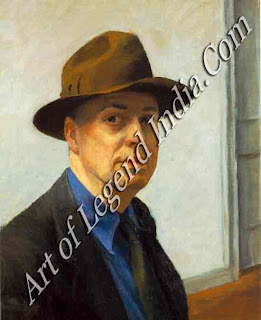
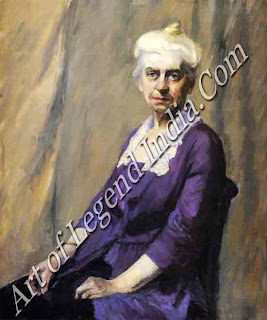
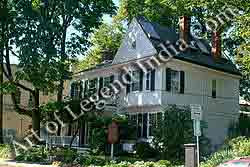

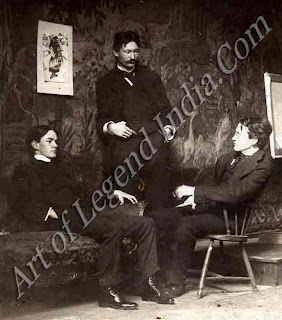
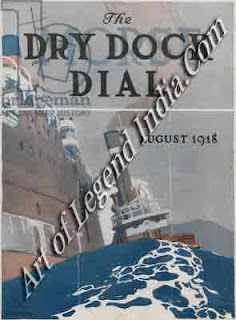
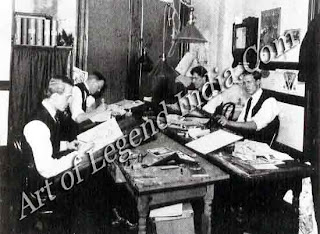
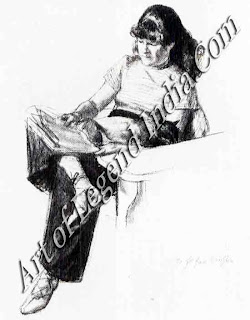
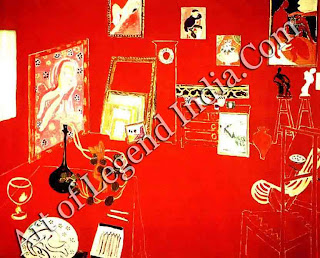










0 Response to "American Great Artist Edward Hopper Life"
Post a Comment